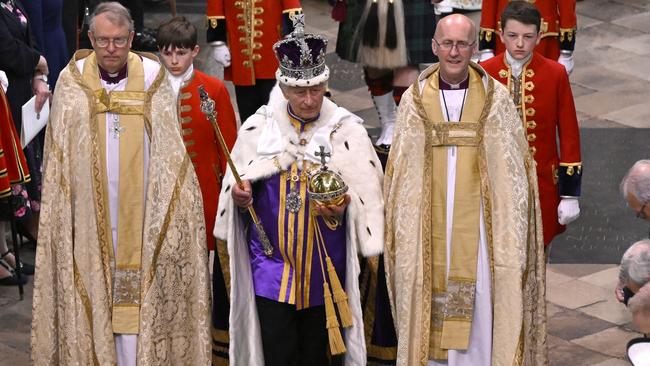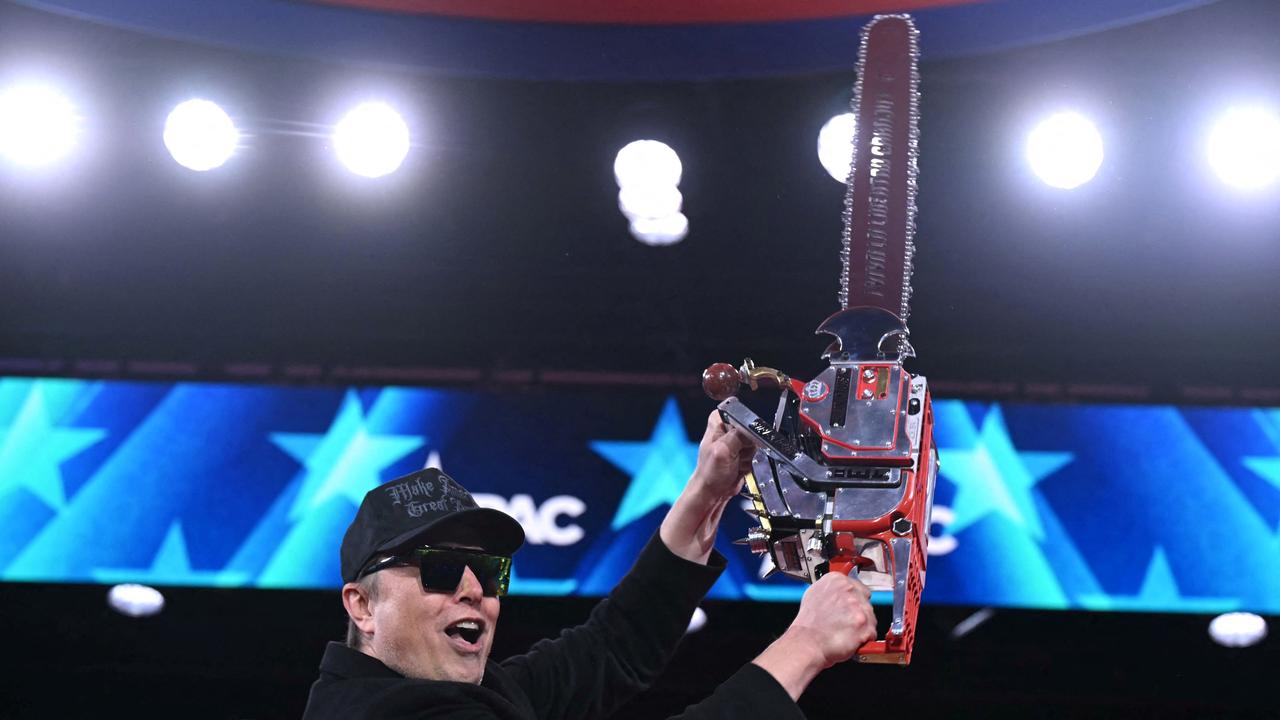From medieval to modern, proud nation still wears its rituals well
The crown, it seems, fits Charles well. Under the arched roofs of Westminster Abbey, in a ceremony bathed in ancient ritual, the newly crowned King took the biggest day of his life in his stride.

The crown, it seems, fits Charles well. Under the arched roofs of Westminster Abbey, in a ceremony bathed in soaring hymns, pomp and ancient ritual, the newly crowned King took the biggest day of his life in his stride.
Maybe it’s no surprise that he appeared so poised and confident during his coronation given that the 74-year-old has been preparing all his life for this moment.
Charles III’s serenity was not shared by his most loyal subjects, who were squeezed like sardines along the procession route, cheering on their now crowned King and his Queen, Camilla, as they rode the Gold State Coach back to Buckingham Palace.
They may be out of practice but it turns out the British are still very good at coronations.
Those who huddled around their black-and-white TV sets to watch the previous one, of Queen Elizabeth in 1953, remember it as jaw-dropping.
This coronation, screened around the world in its technicolour glory, reflected a very different Britain as the 105th Archbishop of Canterbury, Justin Welby, tried his best to marry the medieval with the modern.
The multicultural Britain of today was on show with a new “faith procession” into Westminster Abbey – the spiritual home of Christian Britain – featuring leaders from the Jewish, Sunni and Shia Muslim, Sikh, Buddhist and Hindu faiths.
Then there was a reading by the country’s Hindu Prime Minister, Rishi Sunak.
We saw female bishops on the stage and women of colour in the ceremony, whereas in 1953 the only women in the ceremony were the Queen and her pages of honour.
And then there was the music, a mix of the ancient and the new, including black gospel, and capped off by Andrew Lloyd Webber’s new anthem, called “Make a Joyful Noise” – a piece the King asked him to write, with the instructions that it be “hummable” and “cheerful”.
But the ceremony also contained more than enough ancient and at times indecipherable medieval rites to keep traditionalists happy.
There was the peculiar “Homage of Royal Blood”, which saw Prince William kneel before his father and pledge his loyalty “as your liegeman of life and limb”, ending his words with a gentle kiss on his father’s cheek.
And then there was the ancient ritual of the “Great Golden Spurs”, which the King rubbed with his hands, symbolising knighthood. The spurs were carried into the abbey on a red cushion by Simon Abney-Hastings, the 15th Earl of Loudon, who lives in Wangaratta, Victoria.
And then, with the King hidden by screens, Charles’s head and hands were rubbed with holy oil from Jerusalem as the choir chanted “God Save the King”.
Who knows what the Australian contingent at the coronation thought of it all. Led into the abbey by soccer star and flag-bearer Sam Kerr wearing a black suit, the group included Prime Minister Anthony Albanese, Governor-General David Hurley, rocker Nick Cave and leaders of the arts and sciences.
For sheer pomp and pageantry, it was hard to top, even if some Australians back home might have baulked at the call by the archbishop for all to pay a verbal “true allegiance to your majesty, your heirs and successors according to law, so help me God”.
After some criticism of this during rehearsals, the wording of the archbishop’s call was softened to make the pledge of allegiance sound like an invitation, not an instruction.
There were no major bloopers in this coronation, unlike the last time a king was crowned, in 1937, when the archbishop put the St Edward’s Crown backwards on George VI’s head.
Camilla, whose crowning capped off her unlikely rise to be Queen, also seemed calm in the spotlight, giving a cheeky half-grin at times.
Prince Harry, the self-imposed royal exile, walked into the abbey with a smile but he cut a lonely figure as he stood in the third row, where he appeared to have no interaction with his estranged brother in the front row.
His wife, Meghan Markle, chose to stay in California and Harry was said to have attended only because he feared he might one day regret it if he didn’t. He was in London barely 24 hours for the ceremony, which coincided with his son Archie’s fourth birthday.
William’s eldest son, nine-year-old Prince George, carried the King’s robes as one of four pages of honour, giving him an early taste of a ceremony that may one day see the crown placed upon his own head.
To the relief of the 11,500 police on duty, the ceremony and the King’s processions to and from the palace to Westminster Abbey appeared trouble-free.
But in Trafalgar Square police arrested at least six republican protesters, including the leader of anti-monarchist campaign group Republic, Graham Smith. They were arrested as they unloaded placards saying “Not My King”.
Charles’s coronation comes at a time when the majority of the country supports the monarchy, but there is a sizeable and growing minority who favour a republic, especially young adults.
Who knows how long Britons will embrace future coronations but they did embrace this one.
The newly crowned King and Queen appeared with their family on the balcony of the palace to raucous cheers to watch the royal flyover.
Then the pubs filled up and the parties began. As night fell, London Bridge was bathed in red, white and blue lights, celebrating the only coronation most Britons have ever seen.




To join the conversation, please log in. Don't have an account? Register
Join the conversation, you are commenting as Logout